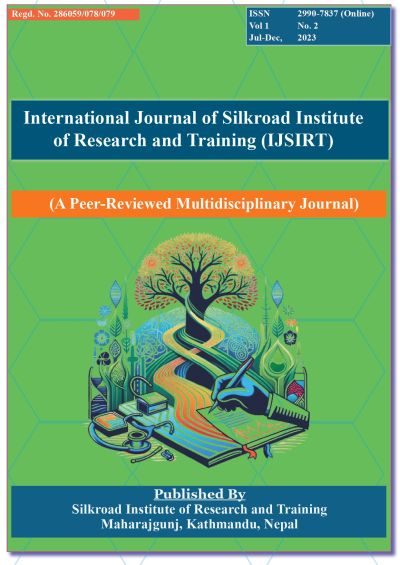Children Ever Born and its Associated Factors of Women in Tansen Municipality of Palpa District Nepal
DOI:
https://doi.org/10.3126/ijsirt.v1i2.61665Keywords:
children ever born, factors, fertility, prevalence, womenAbstract
Background: Fertility refers to a couple’s, individuals, groups or population’s ability to bear children. It primarily affects women in the reproductive age range of 15 to 49 years. Fertility is one of the most important factors influencing population change in practically all countries. This study is aimed to determine the socioeconomic and demographic factors that influence fertility in women in Tansen Municipality.
Methods: An analytical cross-sectional study was conducted among 144 married women of Tansen municipality using primary. Data was analyzed by using descriptive and inferential statistical tools. In descriptive statistics, mean, standard deviation, frequency distribution, pie-chart, bar-diagram, and cross-tabulation tools were utilized, while inferential statistics used chi-square test and t-test.
Results: The average age of respondent is 29 years with standard deviation 3.72 years. The average age of respondent whose Children ever born (CEB) is less than two (28.61±3.55) is statistically lower than that of having more than two CEB (32.44±4.63), (p-value=0.003). Education (P-value=0.007), and contraceptive/family planning knowledge (p-value=0.041) are factors that contribute to the decreased the number of children ever born to women. The longer duration of age contributes significantly to the rise in CEB. Women with a higher level of education appear to have a key role in reducing the number of CEB. The result of the study shows that the women having high level of knowledge about family planning and contraception use decreases the CEB of the women.
Conclusions: Findings show that age, education, and contraceptive/family planning knowledge are all factors that contribute to the increased number of children ever born to women.
Downloads
Downloads
Published
How to Cite
Issue
Section
License
Copyright (c) 2023 Keshav Raj Bhandari, Kalpana Ghimire, Hari Prasad Upadhyay, Deepak Bahadur Pachhai, Supendra Karki

This work is licensed under a Creative Commons Attribution-ShareAlike 4.0 International License.
CC BY-SA: This license allows reusers to distribute, remix, adapt, and build upon the material in any medium or format, so long as attribution is given to the creator. The license allows for commercial use. If you remix, adapt, or build upon the material, you must license the modified material under identical terms.




